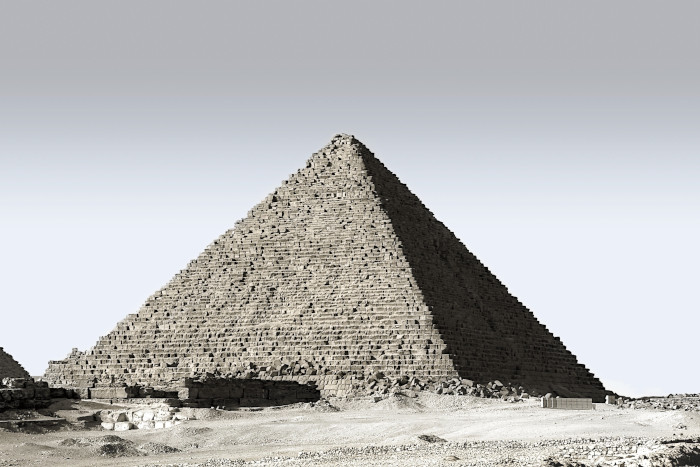You landed that first teaching job — nicely done! Now the real work begins. Maybe you’ve realized that you have little in the way of curriculum and materials to get started. Don’t worry! This is how basically every teacher starts their career.
Even though teachers undergo a practicum that includes student teaching, observations, and classroom theory, it really isn’t until you get your first job that you start to create your own curriculum to match your style as a teacher. Some schools and districts might provide you with a curriculum; if they do, you should at least use it for your first year to get comfortable. This will allow you to get your bearings and figure out what teaching is really like without worrying about what content you’ll be covering. It can also allow you to collaborate more meaningfully with other teachers who are likely teaching the same content.
But what if your school doesn’t provide you with a curriculum? Not a problem! Developing your own curriculum is not hard, and for teaching nerds like me, it can actually be pretty fun. Once you’ve created your own curriculum, you’ll be able to seamlessly adapt it from year to year. Making changes is easier when you’ve created the curriculum because you know exactly where and why you included every piece. So, where do you begin?
Easily organize your classes with Classcraft.
6 steps to building a curriculum

Step 1: Crack open the standards
Before you begin planning, you need to know what your students need to be able to understand or do by the end of the year. Your guide for this should be your state-mandated standards. Depending on your content and grade level, your standards may be very specific and in-depth or they may be more vague and open to interpretation. Either way, be sure to read them!
As you review those standards, develop a list of concepts that your students will need to grasp before the end of the year. Your list will inevitably be lengthy because it will need to cover a whole year’s worth of material.
Once you’ve listed what students need to know based on the state standards, you can begin to look for patterns or related concepts. Try to divide up the concepts that students will need to know into five to seven discrete units. Some state standards already do this for you. For example, the Next Generation Science Standards (NGSS) have the standards for each level of science essentially broken down into units for each of the different science concepts. In reality, you can split up your units however you see fit, as long as you consider what your student needs to know before moving on.

Step 2: Create a scope and sequence for your units
Now that you have an idea of what units you’ll be teaching, it’s time to consider the order in which your units should be taught. Can they be covered in isolation, or does one unit build upon another? If it’s the latter, then you need to ensure that the most complex concepts or standards are taught last, as your students will need to master the basics before tackling high-level material. However, if your units are mostly independent, then the order in which you teach them won’t really matter — just decide on one that fits your schedule and lessons.
In addition to organizing your units, you should also arrange the concepts themselves within each unit. These are the same concepts you listed earlier when reviewing your state standards and creating your units. Be intentional about the order of the concepts — try to make them sequential, building upon previous material. Feel free to add in additional concepts that you feel are necessary to bridge any gaps. However, be wary of eliminating concepts; doing so may mean that you won’t adequately meet the corresponding state standard.
Believe it or not, you still aren’t developing actual lessons at this point. Laying out this framework may seem time consuming, but it’s definitely worth it in the end because you won’t be wasting time creating lessons that don’t fit in with your units.

Step 3: Develop the final assessment for each unit
Okay, that was a lot of work! But now you can finally start to develop some actual teaching materials. Rather than jumping right in and developing lessons from start to finish, I like to start my planning with the final assessment in mind. This could be a large, end-of-unit summative assessment, or it could be a smaller, chunked assessment given mid unit. Either way, start by deciding how you’d like to evaluate what your students can do or have learned. Keep in mind that an assessment does not mean a simple test — that’s just one example, but you could also have students do a presentation, create a game, write a paper, or anything else; there are no limits here. These assessments should be developed to address the standards and any associated concepts. Once you know how your students will be assessed, you can then move on to some of the more creative work of creating your day-to-day lessons.

Step 4: Develop lessons or activities
At this point, you’re ready to begin designing a more detailed curriculum for each day. Use your final assessment as a guide. What will students need to know or do to be successful on it? Since that final assessment reflects the standards that students will need to have met by the end of your class, if you teach with the assessment in mind, then you’ll have covered all necessary standards.
When I develop lessons and new curriculum, I tend to start with a simple list of learning objectives that students need to meet in order to succeed on the final assessment for a particular unit. A learning objective is a simple statement that encapsulates the learning for the day, such as, “The student will be be able to _______.” I then develop a lesson, or a series of lessons, around each objective. Since you’re a new teacher, this gives you a guide for choosing activities and developing materials.
You should only use activities or give lessons that directly address your objective. This allows you to frequently check in on how students are progressing towards meeting the standard. If a student is continually meeting the daily lesson learning objectives, then chances are that they will be able to meet the standard on the final unit assessment. If many students are not meeting the daily objectives, it also give you a chance to ask why and develop some new lessons to re-teach or approach a concept in a new way. This flexibility is key when you’re still learning how to teach, especially with a new curriculum.

Step 5: Differentiate
Great! You’ve created your daily lessons. Take a deep breath because the biggest chunk of work is over. But we’re not completely finished yet!
Now it’s time to think about your students with special needs, language learners, and gifted and talented students. You need to ask, “Will this material be at an appropriate level for each student?” If not then you need to differentiate.
This is can be a difficult task to do before you know your students. However, if you at least have a general idea of the student body that you’ll be working with, then you can make some educated guesses as to how you should differentiate based on their needs.
For example, if you know you’ll have many language learners, then you’ll likely need to provide lots of visuals, sentence frames for writing, and even modified readings. Don’t stress about this — use your special education providers, English language development teachers, and gifted and talented coordinators if you need help differentiating.

Step 6: Do a mental walk through
If you’ve made it this far, you’ve essentially developed your own curriculum — congratulations! Now, do a quick mental walk-through: Does it make sense from start to finish? Are there elements that need to be switched? Supplemented? Removed? You should take care of those now before you commit to anything in the classroom. It might even be good to have a colleague look it over to see if there’s anything that looks odd or out of place.
Always a work in progress
Creating a new curriculum from scratch is hard work, especially for a new teacher who has yet to be alone in the classroom. Always remember that you’ll certainly make mistakes — it’s normal! And even though you’ve gotten through the hardest part, know that your work isn’t over; developing a good curriculum is a constant process that requires creativity and iteration.
I’d encourage all teachers, but especially new ones, to start a lesson journal where you take note of what goes well with your lessons and what you might change next time. All good teachers make changes from year to year in their curriculum because what works for one group of students might not work for another. The skeleton of your units might stay the same, but the lessons and differentiation may change from day to day and class to class. By being flexible you can ensure that you don’t get burned out and that your students get the individualized lessons they need.
Don’t be intimidated by the thought of creating a new curriculum — just follow the six steps above, and you will be well on your way!
Photo credit: Pixabay/Pexels.com
Personalized Learning


